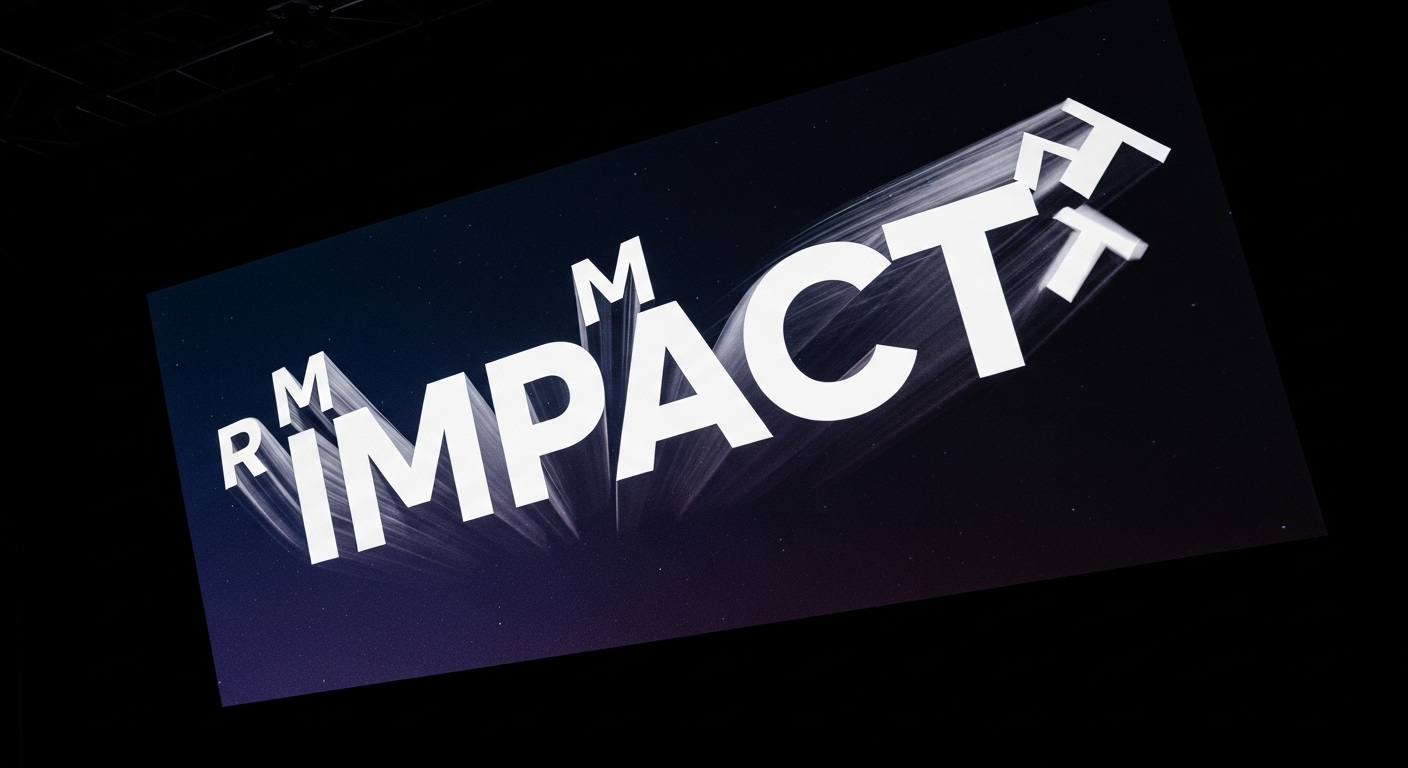Kinetic Typography: Moving Words in the Digital Age
In an era dominated by visual communication, a dynamic art form is captivating audiences and revolutionizing the way we perceive text. Kinetic typography, the art of animating text to express ideas and evoke emotions, has emerged as a powerful medium in digital design, advertising, and cinematic storytelling. This innovative technique breathes life into words, transforming static letters into fluid, expressive elements that dance across screens and capture viewers' attention in ways traditional typography never could.

Breaking the Static Mold
At its core, kinetic typography challenges the traditional notion of text as a static element on a page or screen. By infusing movement, rhythm, and timing into letterforms, designers can convey tone, emphasis, and emotion in ways that static text simply cannot. This dynamic approach to typography allows for a more immersive and engaging experience, blurring the lines between reading and watching.
Techniques and Styles in Motion
Kinetic typography encompasses a wide range of techniques and styles. From simple fades and transitions to complex 3D animations, the possibilities are virtually limitless. Some common approaches include:
-
Revealing text: Words gradually appear or unfold on screen
-
Morphing: Letters transform into different shapes or objects
-
Particle effects: Text breaks apart into smaller elements
-
Synchronized animation: Words move in harmony with music or narration
Each technique serves a specific purpose, whether it’s to guide the viewer’s attention, reinforce a message, or create a particular mood or atmosphere.
Impact on Branding and Advertising
The advertising industry has embraced kinetic typography as a powerful tool for brand communication. Animated logos, dynamic taglines, and expressive motion graphics help companies stand out in a crowded digital landscape. By incorporating movement into their visual identity, brands can create more memorable and engaging experiences for their audience.
Cinematic Applications
In film and television, kinetic typography has become an integral part of title sequences, credits, and on-screen graphics. Directors and motion designers use animated text to set the tone for a film, convey complex information, or add an extra layer of visual interest to a scene. From the iconic opening credits of Saul Bass to the cutting-edge work of modern motion designers, kinetic typography continues to push the boundaries of cinematic storytelling.
Educational Potential
Beyond entertainment and advertising, kinetic typography has shown promise in educational contexts. Animated text can help explain complex concepts, improve information retention, and make learning more engaging for students of all ages. As e-learning platforms and educational videos become increasingly prevalent, the role of kinetic typography in education is likely to grow.
Challenges and Considerations
While kinetic typography offers exciting creative possibilities, it also presents unique challenges. Designers must carefully balance readability with visual appeal, ensuring that the movement of text enhances rather than hinders comprehension. Additionally, considerations such as accessibility for viewers with visual impairments or motion sensitivity must be taken into account when implementing animated text in digital media.
The Future of Moving Words
As technology continues to advance, the future of kinetic typography looks bright. Emerging technologies such as augmented reality (AR) and virtual reality (VR) offer new canvases for animated text, potentially transforming how we interact with written information in three-dimensional spaces. Furthermore, the integration of artificial intelligence and machine learning may lead to more personalized and responsive kinetic typography experiences.
Conclusion
Kinetic typography represents a fascinating intersection of design, technology, and communication. By breathing life into words, this art form has the power to captivate audiences, convey complex ideas, and evoke powerful emotions. As we move further into the digital age, the role of kinetic typography in shaping our visual culture and enhancing our communication experiences is likely to become even more significant. Whether in advertising, entertainment, education, or emerging technologies, the art of moving words continues to push the boundaries of what’s possible in visual storytelling.





